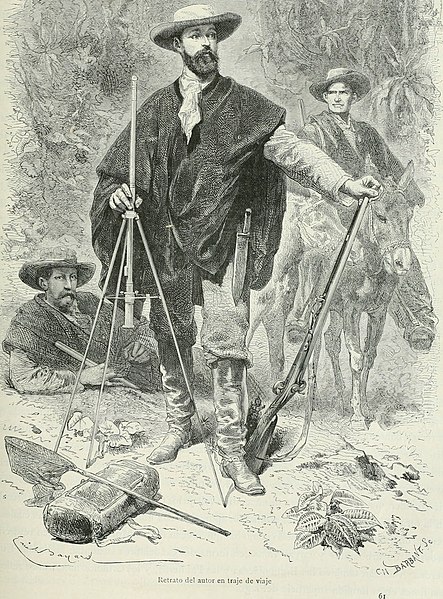 Few traditional pieces of clothing are so beloved and popular that people organize whole festivals to honor them. Colombian authentic poncho-like garment called “ruana” is one such folk item. There are not one but two events dedicated to a ruana – World Day of Ruana and the National Festival of Ruana. Herewith, this traditional blanket has a rather mysterious origin. It’s sort of a fusion between Spanish capes and the traditional blankets of the Andean Muisca and Timoto-cuica indigenous groups.
Few traditional pieces of clothing are so beloved and popular that people organize whole festivals to honor them. Colombian authentic poncho-like garment called “ruana” is one such folk item. There are not one but two events dedicated to a ruana – World Day of Ruana and the National Festival of Ruana. Herewith, this traditional blanket has a rather mysterious origin. It’s sort of a fusion between Spanish capes and the traditional blankets of the Andean Muisca and Timoto-cuica indigenous groups.
A ruana is a distinctive poncho-style outer garment hailing from the Colombian and Venezuelan Andes. Within Colombia, the ruana emerges as the quintessential traditional attire of Boyacá, initially crafted by indigenous and mestizo communities. It also finds production in the regions of Cundinamarca, Bogotá, Antioquia, Nariño, Norte de Santander, Santander, and Caldas. Across the border in Venezuela, it garners widespread usage and craftsmanship in the Andean states of Táchira, Mérida, and Trujillo. Once a staple for all Venezuelan residents during colonial times, its traditional use now persists solely within the Andean realm.
Resembling other poncho-style garments prevalent in Latin America, the ruana essentially takes the form of a thick, plush, sleeveless square or rectangular blanket. It features a central aperture through which the head passes, alongside a front slit extending to the hemline. Optional variations include the incorporation of a hood for head coverage.
Origin of ruana poncho
The origin of this distinctive garment remains shrouded in mystery. One prevailing notion proposes it as a fusion between Spanish capes and the traditional blankets of the Muisca and Timoto-cuica indigenous groups. Alternatively, some contend that the name was drawn from the cloths imported from Rouen, France, by the Spanish.
The term “ruana” itself has an enigmatic etymology, likely rooted in the Spanish language, signifying woollen fabric, tattered cloth, or even street-associated. A more tentative explanation, put forth by ProColombia, the official Colombian agency overseeing international tourism, foreign investment, and non-traditional exports, asserts that “ruana” stems from the Chibcha term for “Land of Blankets”. This title paid homage to the woollen textiles crafted by the Muisca and Timoto-cuica natives.

Colombian ruana on European explorer, 1884. Author: Wiener, Charles, 1851-1913 Crevaux, Jules, 1847-1882 Charnay, Désiré, 1828-1915 André, Edouard. From Wikipedia.org
Pre-Columbian Muisca, or Chibcha, communities donned attire akin to the Ruana. These ruanas, worn by indigenous Muisca individuals, were reportedly fashioned from wool and extended to the knees. This design was well-suited to the chilling temperatures of the region. These garments served not only as clothing but also as bed covers or cushions for sitting. Numerous ruanas continue to be meticulously handcrafted from virgin wool sourced from sheep. An 1856 watercolor depicts an indigenous man in the Cordillera Occidental of Colombia, diligently weaving a ruana using a sizable foot-pedaled loom.
Contrary viewpoints argue against a direct evolutionary link between these historical garments and the contemporary ruana. Instead, they propose that the modern ruana emerged post-Spanish conquest. It was potentially introduced by uprooted Quechua yanakuna slave-servants from the disbanded Inca Empire. These individuals were brought by local Spanish hacendados to toil on the lands during the early Colonial era.
Interesting fact about Colombian ruana! There are 2 unique festivals to honor the ruana, both in the Boyacá department of Colombia: the World Day of Ruana and the National Festival of Ruana. Not many traditional garments have whole festivals dedicated to them.


